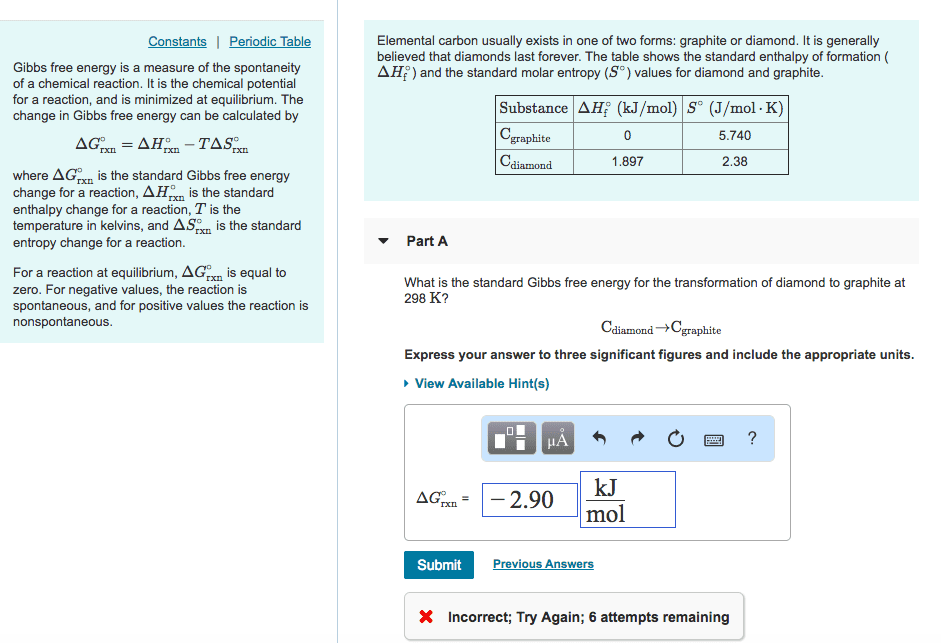CHEM1100 Lecture Notes - Lecture 18: Gibbs Free Energy, Spontaneous Process, Endergonic Reaction

Lecture 18 - Spontaneity and Gibbs Free energy !
Gibbs free energy
•Is the amount of available energy in a system that can be used for work !
•Is the driving force for a chemical reaction because it considers both effects of enthalpy and
entropy !
•Will explain which direction a reaction will happen and if it will be endo or exothermic !
!
Some notes!
•∆G < 0 : spontaneous process
•∆G > 0 : reverse process is spontaneous
•∆G = 0 : equilibrium
•spontaneous reactions minimise free energy (because S will be larger in the equation
and will decrease the G
Standard Gibbs energy change
!
The amount of free energy in a reaction of compounds = how much energy is in the products -
how much energy was in the reactants. !
The energy in the reactants/products in the heat that was required to from each compound. This
is called the standard Gibbs energy of formation (ΔfG Ѳ )
•change in G when 1 mol of a substance is created from its constituent elements, with all species
being in their standard states. !
Gibbs free energy = - temperature x (change in entropy of the universe)
find more resources at oneclass.com
find more resources at oneclass.com
Document Summary
Lecture 18 - spontaneity and gibbs free energy. Gibbs free energy = - temperature x (change in entropy of the universe) The amount of free energy in a reaction of compounds = how much energy is in the products - how much energy was in the reactants. The energy in the reactants/products in the heat that was required to from each compound. This is called the standard gibbs energy of formation ( fg : change in g when 1 mol of a substance is created from its constituent elements, with all species being in their standard states. Enthalpy is increased because melting ice is an endergonic reaction. But this reaction is only spontaneous at t>0. When t = 0, this reaction will be at equilibrium. Reactions that decrease the disorder (enthalpy) and increase the amount of energy in the system (the enthalpy) will never be spontaneous.


